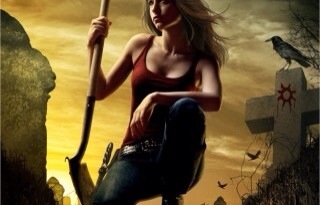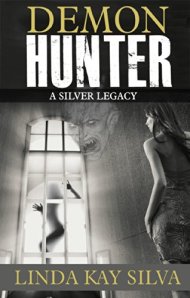18 months of reading only series by female authors of the darker side of fantasy
Women authors, particularly in mainstream fiction genres, tend to be ignored, under-rated, or cast into the category of “chick lit” (which implies fit for female consumption only and thereby of lesser quality.) Certainly, books intended for a female focal or exclusively female audience have unique specificity, yet any presumption that books written by a woman author is either intended for women’s eyes only or simply not worthy of a larger audience.
At certain points in my life, I admit to being somewhat of a literary snob. Certain forms of literature, particularly from the late 18th century, 19th century and early 20th Anglo-European culture, filled both my mind and bookshelves with what “ought” to be read. These works,largely, are written by males with females authors proving glorious exceptions. That was the range of my focus. Of course, ancient classic works within the Greco-Roman tradition were necessary, along with Dante, and any foray outside of Europe or the United States fell within Hindu, Chinese, or Japanese philosophical spectrum. Hence, fiction reading had a classical education taint to it. Modern works by lauded authors, mostly White, more often male rounded out (obliquely) the rest of the collection.
By the time I reached my teens and then college, a larger world of reading material opened for me: not just exposure to writers of color (a conversation that demands more space and attention), but genres previously avoided for their “lack of depth”. Case in point: science fiction and fantasy. Literature classes ignored these broad genres and I was clueless. The first time that I read modern science fiction (believe it was either Heinlein or Asimov) I thought that I had gone to heaven — or the heaven’s. Then when I read, The Mists of Avalon, by Marion Zimmer Bradley, my world went completely a tilt, since my love of things Arthurian and fairy became an adult reading journey. For decades, I read the genres within the scope of Fantasy on the sly. Anne Rice, Ursula LeGuin, William Gibson, Piers Anthony, and so many others filled my nightstand with reading material but not my office bookshelves — somewhat like eating forbidden candy. This proved a continuation of the legacy of hegemonic education. While that legacy is filled with discussion worthy aspects, what is germane here is that the older I get, the more that I embrace my love of fantasy.
Not just fantasy — dark worlds fraught with allusions to past mythology, present techno-focal thinking, and the realism of a scio-political landscape built on alienation, conflict, xenophobia, and designed oppression cum oppositional forces.
[Of course, this book snobbery in no way carried over to my predilection for sci-fi and paranormal television and movies. Perhaps that too, is indicative of hegemonic snobbery — television and film are not “literary” or something. Or maybe I’m simply contrary that way. The television and film discussion seems to be another, necessary, long discussion for another time.]
Given that the definitions for Fantasy and it’s sub-genres vary, my parameters for categorization follow along these lines, loosely, and there is tremendous overlap
Fantasy Fantasy as a genre, commonly uses magic and other supernatural phenomena as a primary plot element, theme, or setting. Setting often takes place in imaginary worlds where magic and magical creatures exist, generally gaining inspiration from mythology and folklore. Within such a structure, any location of the fantastical element is possible: it may be hidden in, or leak into the apparently real world setting, it may draw the characters into a world with such elements, or it may occur entirely in a fantasy world setting, where such elements are part of the world.[
Urban Fantasy is a sub-genre of fantasy defined an urban setting. Many urban fantasies are set in contemporary times and contain supernatural elements. However, the stories can take place in historical, modern, or futuristic periods, and the settings may include fictional elements. Here the fantasy cast within the real world by means of alien races, the discovery of earthbound mythological creatures, coexistence between humans and paranormal beings, conflicts between humans and paranormals.
3. Dark Urban Fantasy is a sub-genre of UF replete with themes of a darker nature.
Darkness, death, violence, sex, and blood permeate stories dealing with paranormal characters and their urban landscape. A struggle typically exists as characters cope with latent magic and it’s effect on humanity or a notion of fallen as in-between the good versus evil dynamic or the this world/other world distinction.
4. Science Fiction, overly simplified, is a genre of fiction dealing with imaginative content such as futuristic settings, futuristic science and technology, space travel, time travel, faster than light travel, parallel universes, and extraterrestrial life. Authors commonly use science fiction as a framework to explore politics, identity, desire, morality, social structure, and other literary themes. A couple of important elements, which overlap into UF, DUF, etc.
alternative timelines, or in a historical past that contradicts known facts of history or the archaeological record.
other worlds, or on subterranean earth.
Characters that include aliens, mutants, androids, or humanoid robots and other types of characters arising from a future human evolution.
Scientific principles that are new or that contradict accepted physical laws, for example time travel, wormholes, or faster-than-light travel or communication.
New and different political or social systems, e.g. dystopian, post-scarcity, or post-apocalyptic.
Paranormal abilities such as mind control, telepathy, telekinesis, and teleportation.
Other universes or dimensions and travel between them.
5. Paranormal: Paranormal fiction is a genre of fiction whose storylines revolve around the paranormal. The most prevalent themes involving vampires, shapeshifters, ghosts, or time travel, paranormal romances can also include books featuring characters with psychic abilities, like telekinesis or telepathy.
6. SteamPunk. Steampunk is a sub-genre of science fiction that typically features steam-powered machinery, especially in a setting inspired by industrialized Western civilization during the 19th century. Steampunk works are often set in an alternative history of the 19th century’s British Victorian era or American West, set within in a post-apocalyptic future during which steam power has regained mainstream use, or in a fantasy world that similarly employs steam power. Steampunk perhaps most recognizably features anachronistic technologies or retro-futuristic inventions as people in the 19th century might have envisioned them, and is likewise rooted in the era’s perspective on fashion, culture, architectural style, and art.
7. CyberPunk is a subgenre of science fiction in a near-future with plots centering on a conflict among hackers, artificial intelligences, and megacorporations. The setting tends to be cast in a near-future Earth, rather than the far-future settings or galaxies. The settings are usually post-industrial dystopias but tend to be marked by extraordinary cultural ferment and the use of technology in ways never anticipated by its creators. Very reminiscent of film noir aesthetic.






